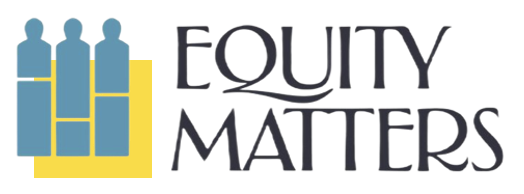From Mission to Action: Making Equity a Lived Reality in Schools
Equity in education cannot be a passive ideal tucked away in mission statements and strategic plans—it must be woven into the very fabric of how we teach, lead, and support students every day. Yet, too often, equity initiatives get lost in the shuffle of competing priorities, leaving students, especially those from historically marginalized communities, to navigate barriers that should have been removed long ago.
For school and district leaders, equity must extend beyond academics into policies, student services, and operational decisions that shape the educational experience. For teachers, it must be embedded in daily instruction, ensuring that every student feels seen, valued, and empowered in their learning journey.
So, how do we move from good intentions to tangible impact?
In this post, we tackle key questions that school leaders and educators face when striving to turn equity into action—ensuring every student has access to the opportunities, resources, and support they need to thrive.
1️⃣ How can school and district leaders ensure that equity is not just a mission statement but an actionable priority across all aspects of the educational experience—from instruction to policies to student support services?
Dr. Sonya Murray, CEO/Founder
“Education leaders can transform equity from aspiration to action by implementing systematic changes across the district and school. This includes conducting regular equity audits of course access and outcomes, revising discipline policies to eliminate disproportionate impacts, and allocating resources based on student needs. Leaders should also establish robust data systems to track key equity indicators and hold regular reviews with staff to identify and address opportunity gaps.
To create lasting change, districts must pair these structural reforms with sustained professional development around cultural competency and implicit bias. This means providing teachers with ongoing coaching in culturally responsive practices, ensuring counseling and support services proactively reach underserved students and creating inclusive environments where diverse student voices influence decision-making. Success requires setting specific equity goals with clear benchmarks while maintaining transparency about progress and challenges.“
2️⃣ What strategies can school and district leaders use to amplify student voices in decision-making processes and create a culture where every student feels empowered and valued?
Dr. Terrance Scott, Equity Consultant
“In my experience as an educator and leader, empowering student voices is essential to building a thriving, equitable school community. It begins with establishing meaningful leadership structures where students are not just heard but actively shape their learning environment. For instance, forming student advisory councils and restorative forums gives students direct input on school policies and daily practices, allowing them to share their experiences and propose real solutions. This approach—collecting feedback and, more importantly, acting on it—builds trust and validates the crucial role that students play.
Equally important is the transparency in our decision-making processes. When we co-design policies like discipline protocols or dress codes with students, we demystify the reasons behind our choices. Even when student ideas cannot be fully adopted, explaining the rationale demonstrates respect and fairness, ensuring that every decision is rooted in shared values. This clarity not only informs students but also helps them understand the complexities of leading a community.
Furthermore, shifting from a mindset of compliance to one of genuine contribution is vital. By dismantling deficit-based narratives that have too long labeled students—especially Black and Brown youth—as problems, we start to see them as the assets they truly are. When students are trusted to lead, whether through restorative circles or by participating in decision-making committees, they help create a culture built on shared accountability and mutual respect. Fair process means that even in moments of tough decisions, students are engaged, their perspectives considered, and their expectations clearly defined.
Empowering student voice is not about giving power away; it’s about building power together. By fostering environments of authentic engagement, transparent decision-making, and clear expectations rooted in trust, we transform schools into communities where every student feels valued, capable, and ready to contribute to their own educational journey."
3️⃣ How can leaders across all departments (academics, student services, operations, etc.) collaborate to break down systemic barriers and ensure equitable access to resources, opportunities, and support for all students?
Mrs. Tashanae Francis-Womack, Equity Consultant
"Your mission is powerful, and your vision for transforming education is inspiring. You are surrounded by a team of dedicated educators who share your passion for student success. But have you truly harnessed the power of collaboration to achieve this mission?
True collaboration isn’t just a series of emails or a checklist of tasks—it’s about breaking down systemic barriers, fostering innovation, and ensuring fair access to resources, opportunities, and support for every student. It requires intentional, strategic action across all leadership departments in a school or district.
Here’s how we make collaboration meaningful and impactful:
1️⃣ Unify the Vision – Establish a shared purpose across departments to align efforts and maximize impact.
2️⃣ Engage in Meaningful Dialogue – Create spaces for ongoing discussions that challenge assumptions and inspire solutions.
3️⃣ Leverage Strengths Across Teams – Recognize and utilize the unique expertise of each department to create holistic solutions.
4️⃣ Take Collective Action – Move beyond conversation by implementing student-centered strategies that remove barriers.
5️⃣ Measure and Reflect – Continuously assess progress, celebrate wins, and refine approaches to sustain long-term impact.
Collaboration isn’t just an option—it’s the foundation for transformative change. Let’s come together and build a future where every student has what they need to succeed. "
4️⃣ What are some practical ways teachers can ensure all students—regardless of background or ability—feel seen, valued, and empowered in their learning experiences?
Dr. Sherrie Robbins, Equity Consultant
"The impact of feeling seen and valued is life-changing for students, and as educators, we have the power to make that happen every day
First, use an asset-based lens to identify your students' strengths and capitalize on them. Don't just focus on academic strengths, but dig deeper into other areas such as social-emotional strengths, creativity or critical thinking, artistic or athletic abilities, or even personal passions/hobbies. Could your student who loves to talk a lot become the classroom greeter who greets guests who enter the room? Could the student who loves to doodle lead an activity with other students during indoor recess? Could the student who shows deep empathy become the "new student buddy"?
Second, listen with curiosity when your students speak. This of course includes student discourse during academic times, but it extends beyond. Create times to check in with students regularly and acknowledge what you hear, such as greeting students at the door on their way into class. Use this time to validate students' thoughts and acknowledge their efforts. Make an effort to connect with each student daily!
Last, be intentional about building a culture of belonging in your classroom. For example, when a student returns after being absent, let them know that they were missed. Also, be sure there is space for student collaboration and connection such as allowing time for students to provide compliments or "shout-outs" to each other. Belonging also includes allowing for student ownership in choice in such things as creating the rules, developing routines, and even in assignments."
5️⃣ How can teachers use culturally responsive teaching to make lessons more relevant and engaging while maintaining high expectations for all students?
Mr. Marques Harris, Equity Consultant
“ something
6️⃣ What role does student choice and voice play in creating an equitable classroom, and how can teachers incorporate these elements effectively?
Mr. Charles Murray, Equity Intern
“Student voice and choice are essential cornerstones in creating truly equitable classrooms. When students become active architects of their learning environment, they provide educators with invaluable insights into their needs, experiences, and perspectives. This reciprocal transparency builds a powerful partnership between students and educators, laying the groundwork for transformative educational experiences.
The Reaching Individual Students for Excellence (RISE) program exemplifies this approach through its innovative leadership framework. By creating intentional spaces for student dialogue and collaboration, RISE empowers students to share their ideas and learn from one another meaningfully. When students engage in authentic conversation, they develop a deeper investment in their education. This active participation empowers them to identify challenges, propose solutions, and drive positive change within their learning environment. Teachers who embrace and amplify student voices gain crucial perspectives that enable them to understand better and address the diverse needs of their learners. This student-centered approach isn't just beneficial—it's imperative for student success.”








